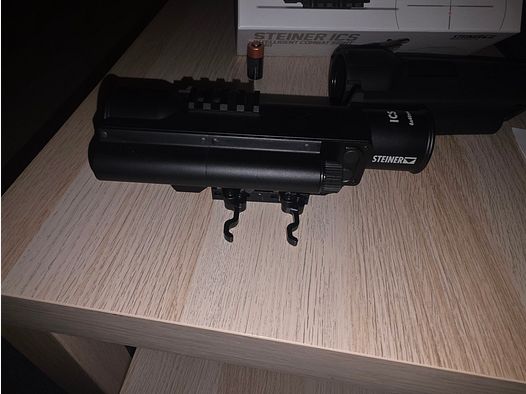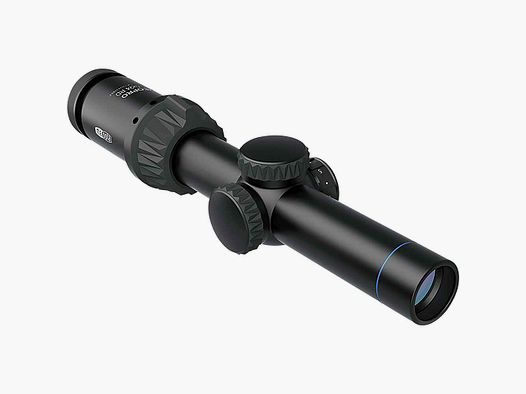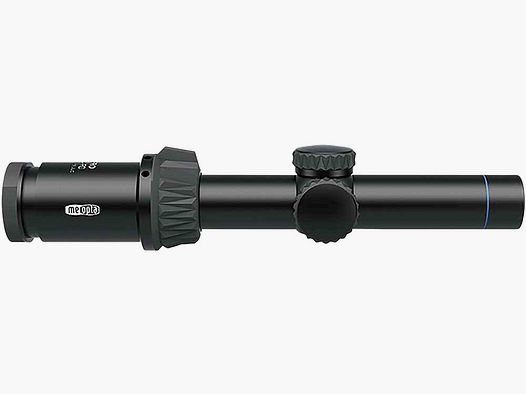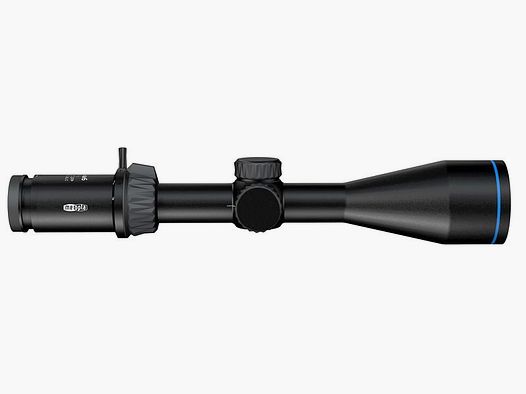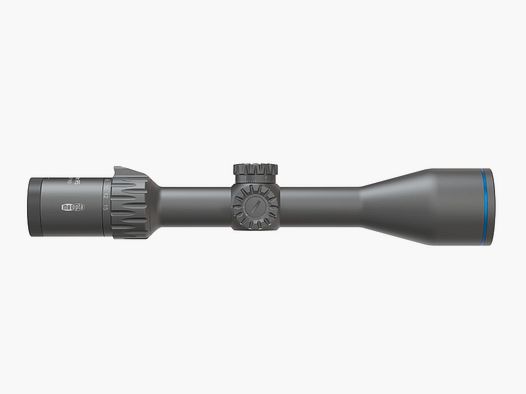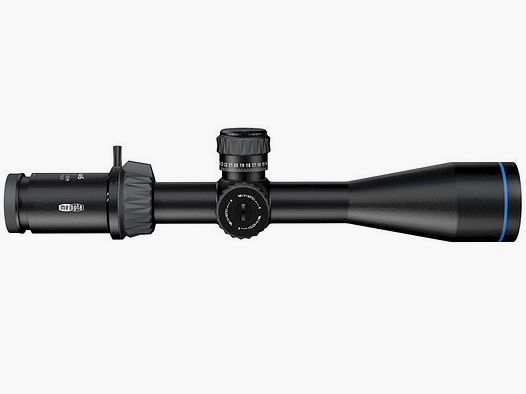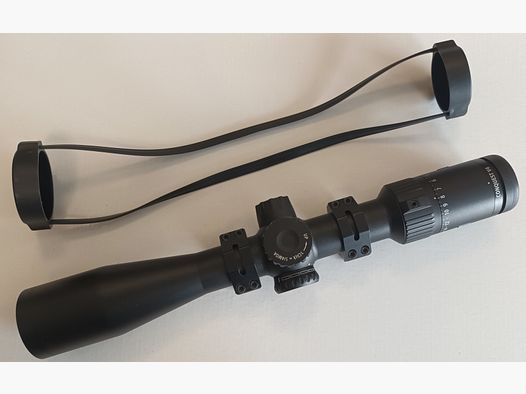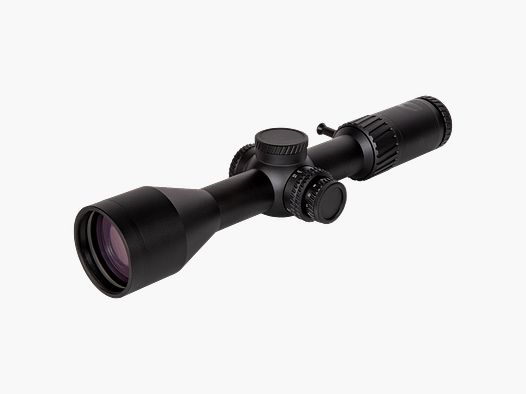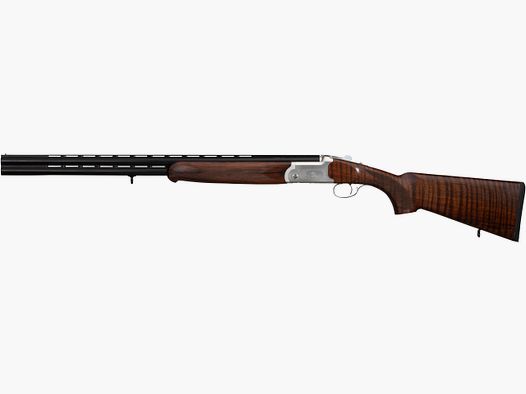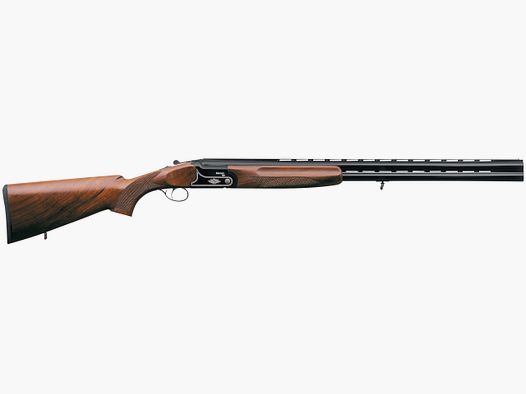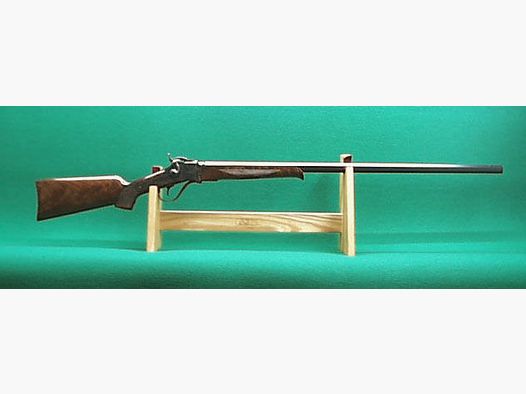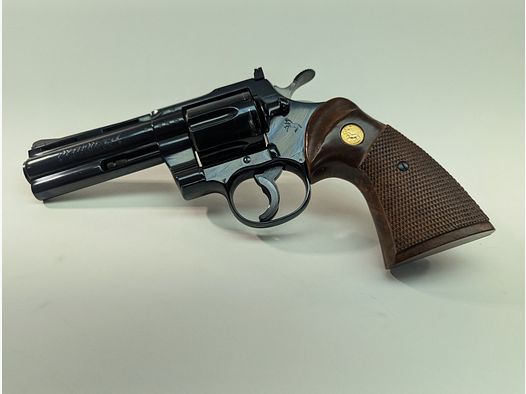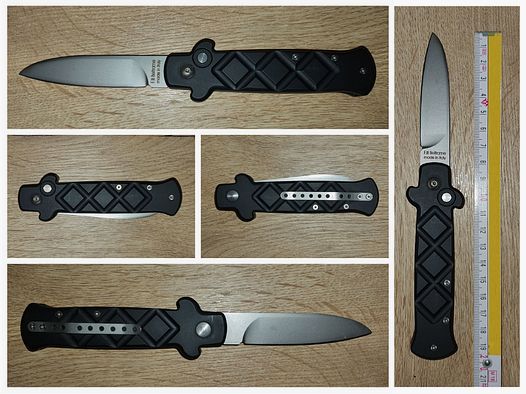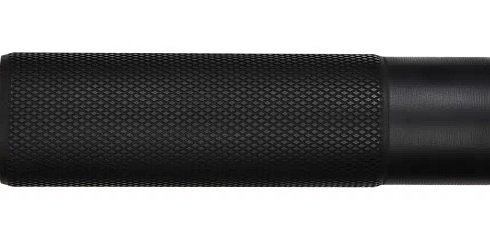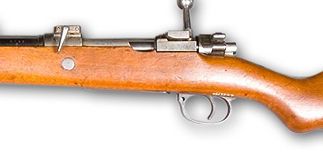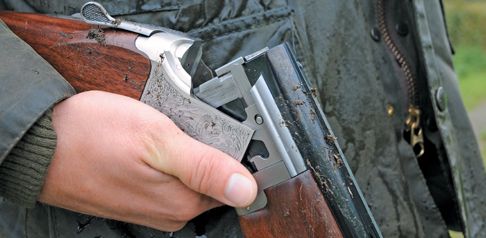If you are a passionate hunter, you surely know that a good scope plays an important role in hunting success. To aim accurately at the target, a reticle is of great importance. But what different reticles are there in hunting optics? In this article, I will provide you with a comprehensive and detailed overview of the various reticles.
The Duplex Reticle
The Duplex reticle is a widely used reticle for scopes and is particularly popular among hunters and sport shooters. It is a very simple and clear reticle that is suitable for most applications. The Duplex reticle consists of two horizontal and two vertical bars that intersect in the middle, forming a fine crosshair. The bars become increasingly thinner from the center, allowing for precise target acquisition.
The Duplex reticle is ideal for quick shots at short and medium distances, as it allows for fast target acquisition while still being precise. The area between the bars in the center of the crosshair can be used as a point of aim, while the bars can be estimated for distance to get a rough idea of the target's distance. This makes the Duplex reticle a very versatile reticle. Another advantage of the Duplex reticle is its simplicity. There are no additional markings or symbols that complicate the reticle. This makes it very easy to use and learn, which is especially beneficial for beginners or casual shooters.
However, the Duplex reticle also has its disadvantages. At longer distances, it can become more difficult to aim precisely, as the bars in the reticle become thinner and harder to see. Additionally, it can be challenging to aim accurately in low light conditions, as the reticle is not illuminated and the bars are harder to see. To overcome these disadvantages, there are many variations of the Duplex reticle. For example, there are reticles where the bars are illuminated to improve visibility in low light conditions. There are also variants with additional markings that provide a more accurate indication of the distance to the target. An example of this is the so-called Mil-Dot reticle, which has an additional scale in the reticle that can be used for distance estimation.
The Mil-Dot Reticle
The Mil-Dot reticle is a popular reticle, especially used in military and tactical applications as well as in long-range shooting sports. It was developed to help shooters estimate distances and shoot more accurately.
The reticle is equipped with Mil-Dots that serve as measurement marks. Each Mil-Dot is 1/1000 of an angle, corresponding to a 1-meter object at a distance of 1,000 meters. Thus, the shooter can estimate the distance to a target by viewing the target through the reticle and counting the number of Mil-Dots it occupies. For example, if the target occupies 5 Mil-Dots, the shooter can estimate that the target is about 500 meters away based on this information. Another advantage of the Mil-Dot reticle is the ability to estimate the height and width of a target. By viewing the target through the reticle and counting the number of Mil-Dots it occupies in height or width, the shooter can estimate the actual dimensions of the target. This is particularly useful in tactical applications where knowing the size of a target is important for choosing the right weapon and tactic.
The Mil-Dot reticle can also be used for shot correction. If a shot misses the target, the shooter can measure the position of the hit in relation to the reticle and make the necessary corrections. For example, the shooter can adjust the reticle to hit the target more accurately on the next shot. Although the Mil-Dot reticle offers many advantages, there are also some disadvantages. Some shooters find the Mil-Dots too small and difficult to see, especially in low light conditions. Other reticles may offer higher accuracy, but the Mil-Dot reticle is still a very useful and versatile option for many shooters.
The German 4 Reticle
The German 4 reticle is a special reticle used in scopes and developed in Germany. It is characterized by its simple and clear structure, which allows for quick target acquisition.
The German 4 reticle consists of four lines that are drawn horizontally and vertically in the scope. The top line is the thickest and serves as a crosshair for target acquisition at medium to long distances. The lower lines are used to estimate the distance to the target by serving as reference points. Depending on the distance to the target, the crosshair is aligned either with the top line or one of the lower lines. This allows the shooter to aim quickly and precisely at the target. The German 4 reticle is particularly useful in hunting and military applications. It allows for quick and accurate shots on moving targets, as the shooter can quickly acquire the target and estimate the distance to it.
Another advantage of the German 4 reticle is its versatility. It can be used in various lighting conditions and weather conditions. The reticle is also capable of handling different calibers and types of ammunition. There are various variants of the German 4 reticle that may differ in size and shape. Some models may also be equipped with illumination to improve visibility in low light conditions.
The BDC Reticle
The BDC reticle, also known as Bullet Drop Compensating reticle, is a special type of scope reticle that allows the shooter to determine the shooting distance and thus the required holdover more accurately. This type of reticle is used by many shooters in hunting, precision, and tactical shooting sports. The BDC reticle consists of horizontal and vertical lines or dots arranged on the crosshair, which have different distances from each other depending on the distance. This allows the shooter to adjust the holdover more accurately to hit precisely at greater distances. The distances between the dots or lines are calculated based on the ballistic properties of a specific ammunition and a specific weapon.
To use the BDC reticle, the shooter must first know the ballistic data of their ammunition and weapon. This information includes the muzzle velocity of the bullet, the weight of the bullet, the drag coefficient, and other factors that affect the bullet's trajectory. With this information, the shooter can then adjust the holdover points on the BDC reticle accordingly. There are different types of BDC reticles, including the traditional BDC reticle, which is based on a fixed distance table, as well as the flexible BDC reticle, which allows the shooter to adjust the holdover points based on distance. Additionally, there are also special BDC reticles designed for specific calibers or types of firearms.
The BDC reticle offers many advantages over other types of reticles. It allows for faster target acquisition and precision at greater distances, as the shooter does not have to constantly measure the distance and adjust the holdover. Furthermore, it can help the shooter avoid errors in distance measurement and increase accuracy. However, the BDC reticle also has some disadvantages. It requires a precise knowledge of the ballistic data of the ammunition and weapon to be effective. Additionally, it can be difficult to use the BDC reticle in low light conditions or in dark environments.
The Illuminated Reticle
An illuminated reticle is a crosshair that can be illuminated to increase visibility in low light conditions. This type of reticle is often used in scopes for hunting and shooting sports applications and is particularly useful at dusk and dawn or in shady areas.
The illuminated reticle consists of a fine cross or crosshair that is located on a glass or plastic plate in the ocular of the scope. The cross is illuminated by a light source, which is usually powered by a battery housed in the scope housing. There are various color options for the illumination, such as red, green, or blue, to provide the user with a better contrast ratio. The illuminated reticle can be adjusted in various ways, depending on the manufacturer and model of the scope. It can be adjusted manually or automatically, and the brightness of the cross can also be adjusted. Some models feature automatic brightness adjustment systems that make the cross automatically brighter or darker depending on the amount of light present in the environment.
Another advantage of the illuminated reticle is that it allows the shooter to track the target while the reticle is illuminated. This can be particularly useful when shooting at a moving target, such as fleeing game. The illuminated reticle can also help to better recognize the reticle when it is against a dark background. However, there are also some disadvantages to the illuminated reticle. For one, battery life can be an issue, especially if the scope is used frequently. Additionally, the illumination can make the reticle slightly blurry, which can lead to the target not being aimed at accurately enough. Furthermore, the illuminated reticle can cause eye problems for some users, especially when used in low light conditions.
The TMR Reticle
The TMR reticle is a scope reticle specifically designed for tactical and hunting applications. TMR stands for Tactical Milling Reticle and is a reticle used for quick distance measurement and shot correction at medium to long distances.
The TMR reticle consists of a cross that is divided horizontally and vertically. The vertical line is divided into milliradians (MRAD), while the horizontal line is divided into MOA (Minute of Angle). This allows for quick and accurate distance measurement and shot correction. The vertical line is also subdivided with bars, each representing a specific distance. This makes it easy to quickly estimate distances and correct accordingly. The TMR reticle is also equipped with markings on the edges of the vertical line to facilitate holding the point of aim and correcting deviations due to wind or other factors.
The horizontal line is also subdivided with bars measured in MOA. This makes it easier to correct shots at different distances. The distances between the bars correspond to the size of a standard target at the respective distance. Another advantage of the TMR reticle is the ability to adjust the magnification of the scope to improve distance measurement. At higher magnification, the markings on the reticle become clearer and easier to read. Most TMR reticles also have an illumination feature that allows for better visibility of the reticle in low light conditions.
The MOAR Reticle
The MOAR reticle is a ballistic reticle specifically designed for precision shooters. It offers precise target tracking for shots at medium to long distances and helps to account for the effects of bullet drop and wind drift. "MOAR" stands for "Minute of Angle Reticle." Here, "Minute of Angle" (MOA) refers to the unit of measurement for angles often used in ballistics. One MOA corresponds to an angle of 1/60 degrees or 1.0472 arc minutes. The MOAR reticle is thus a scope reticle based on the MOA unit of measurement.
The MOAR reticle is a so-called "Subtension" reticle, meaning it is divided into different subtensions that can be used at various magnifications of the scope. This allows for very precise adjustments to the specific requirements of the shooter and the shooting distance. Another advantage of the MOAR reticle is the use of "Milradian" or "MRAD" units for adjusting the scope. This allows the shooter to make precise adjustments to the target position without relying on other units such as centimeters or inches. The MOAR reticle is also equipped with a "Holdover" or "Point of Aim" system. This means it allows the shooter to adjust the position of the reticle in relation to the target distance to account for the effects of bullet drop and wind drift. This can be particularly useful when the shooter is working with different cartridges or firearms.
The reticle is generally very precise and offers good visibility of the target. However, it is important to note that the shooter needs to have some experience and knowledge in ballistic calculations to use it effectively. It is also important to consider that the use of ballistic reticles is not suitable for all shooting situations, especially in situations where quick target acquisition and tracking are required.
The Christmas-Tree Reticle
The Christmas-Tree reticle, also known as the tree-shaped reticle, is a reticle specifically designed for use in tactical and military scenarios. It is a special scope reticle that consists of horizontal and vertical lines resembling the shape of a Christmas tree. These lines serve to provide the shooter with a quick and precise target assessment, especially when shooting at long distances.
The Christmas-Tree reticle is usually placed in the second focal plane (ocular focal plane), meaning it does not magnify when the magnification of the scope is changed. This is an important factor as it allows the shooter to use the reticle at different magnifications without changing the accuracy of distance estimation. This is particularly important considering that many tactical scenarios often require quick transitions between different distances.
The Christmas-Tree reticle typically features a main central axis that runs horizontally through the reticle, as well as several vertical lines that have different distances from each other. These vertical lines represent different distances tailored to the specific ballistics of the projectile and the ammunition used. Some reticles also have additional markings to account for the effects of wind drift or other factors on the projectile's trajectory. The Christmas-Tree reticle is particularly useful for shots at distances of 300 to 1000 meters, where quick adjustments to the ballistic conditions of the shot are required. The vertical lines of the reticle allow the shooter to quickly and accurately estimate the distance to the target and adjust the bullet trajectory accordingly to enable a hit on the target. The horizontal lines can also be used to account for wind drift.
The V-Plex Reticle
The V-Plex reticle is one of the most well-known reticles for hunting optics. It is characterized by its V-shaped pattern, which allows for quick target acquisition. The reticle is designed to provide the shooter with a quick view of the target while also offering a simple and intuitive alignment on the target.
The V-Plex reticle is typically executed as a Duplex reticle, meaning it consists of a fine cross with a slightly thicker bar in the center. The bar forms the V-shape and ensures quick target acquisition. Another advantage of the V-Plex reticle is that it provides good visibility even in low light conditions. The thicker bar in the center allows for better target acquisition in poor light, and the V reticle offers excellent contrast. The V-Plex reticle is suitable for a variety of hunting situations. It is excellent for stalking and driven hunts, as it allows for quick aiming and shooting. It is also suitable for stand hunting for larger game such as deer and roe deer, as it enables quick and precise target acquisition.
A disadvantage of the V-Plex reticle may be that it is less suitable for very small targets or very long shots. In such situations, it is often better to use a reticle with a more precise crosshair that allows the shooter to place shots more accurately.
The Circle-X Reticle
The Circle-X reticle is a popular reticle used in hunting scopes. It is a variant of the Duplex reticle and is particularly useful when hunting fast-moving game such as wild boar or deer.
As the name suggests, the Circle-X reticle consists of a circle in the center of the crosshair and a cross-shaped Duplex reticle. The circle serves as an additional target marking element that makes it easier for the hunter to quickly acquire a target. The circle can also be used as a measuring tool to estimate the distance to the target. If the circle completely encloses the target, then the target is about 70 to 100 meters away, depending on the size of the circle in relation to the target.
The Circle-X reticle is particularly advantageous in situations where the hunter needs to shoot quickly, such as when hunting fleeing animals. The reticle makes it easier for the shooter to quickly acquire a target and ensure that they stay within the target circle to quickly and accurately take down the animal. Another advantage of the Circle-X reticle is that it is particularly useful in low light conditions. The circle in the center of the reticle is illuminated, making it easier to acquire and aim at the target, even in the dark.
There are various variants of the Circle-X reticle that may differ in the size and shape of the circle. Some reticles have a larger circle that almost completely encloses the target, while others have a smaller circle that only covers part of the target area. The size and shape of the circle should be carefully selected to ensure that it meets the specific needs of the hunter and the hunting situation.
In Summary
In summary, choosing the right reticle for hunting optics is crucial for a successful hunting trip. Hunters need to be able to aim quickly and accurately at their prey, and the reticle plays an important role in achieving this goal.
There are many different types of reticles to choose from, which can be selected based on the needs and preferences of the hunter. Some reticles are better suited for use in certain environments and for specific types of hunting than others.
Therefore, every hunter should inform themselves about the various available reticles before purchasing hunting optics and test which one is best suited for them. Regardless of which reticle one chooses, it is important to practice regularly with the reticle to improve accuracy and aiming precision.




